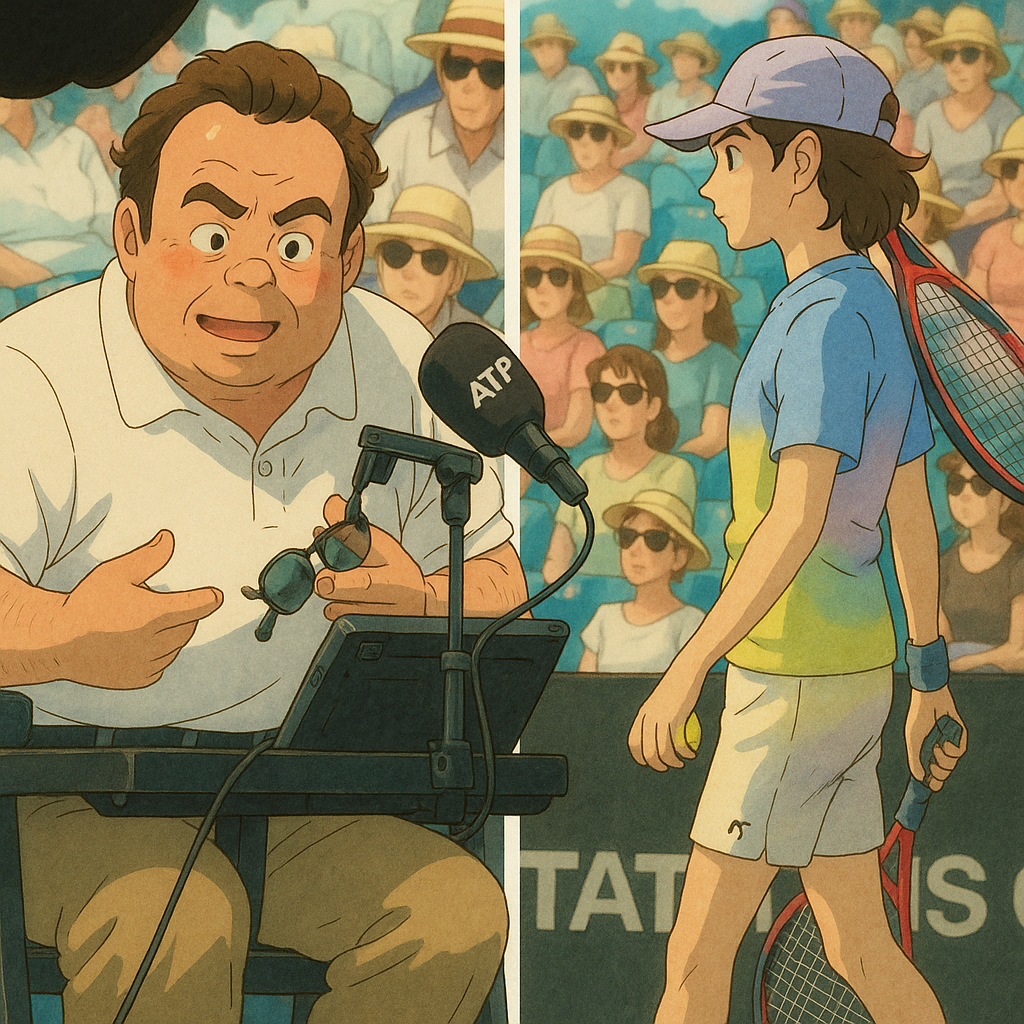EASTBOURNE — Rising tennis star Joao Fonseca has broken his silence after a controversial line-calling incident during his Eastbourne Open match, which led to an unprecedented umpire intervention. The 18-year-old Brazilian, who has been making waves on the ATP Tour, found himself at the center of debate when chair umpire Fergus Murphy ordered a video review—a rare occurrence on grass courts.
The incident occurred during Fonseca’s second-round clash against British wildcard Paul Jubb. At a critical moment in the third set, Fonseca’s forehand was initially called out by the line judge, but the Brazilian immediately contested the decision. Murphy, after a brief discussion with both players, opted to review the mark using Hawk-Eye technology—a move that sparked confusion among spectators and commentators alike.
The Controversial Call
Grass-court tournaments, including the Eastbourne Open, traditionally rely on human line judges rather than electronic reviews due to the surface’s unpredictable bounce. However, Murphy’s decision to overrule protocol and request a Hawk-Eye replay stunned those in attendance. The review confirmed Fonseca’s shot had, in fact, clipped the line, overturning the original call and awarding him the point.
Fonseca, speaking to reporters after the match, expressed mixed feelings about the incident: "I knew the ball was in—I saw the mark. But I didn’t expect the umpire to call for Hawk-Eye. On grass, we usually trust the line judges. It was strange, but fair in the end."
Umpire’s Unusual Decision
Murphy, a seasoned official with over two decades of experience, defended his choice post-match, stating that the call was made under the tournament’s "exceptional circumstances" clause. "When there’s clear doubt and the technology is available, my duty is to ensure the correct outcome," he explained.
The ATP rulebook permits umpires to use electronic reviews if both players agree, but Murphy acted unilaterally—a decision that divided opinions. Former Wimbledon champion Pat Cash weighed in on social media, calling it "a slippery slope for grass-court tennis."
Key Reactions to the Incident
- Paul Jubb: "I’ve never seen that before. It’s grass—you play the call."
- Tournament Director Gavin Fletcher: "We’ll review protocols to avoid future confusion."
- Tennis Analyst Mark Petchey: "Precedent-setting? Possibly. Correct? Absolutely."
- Fans on Social Media: Split between praising Murphy’s initiative and criticizing the break from tradition.
Fonseca’s Rising Profile
The controversy overshadowed another impressive performance from Fonseca, who has surged into the spotlight this season. The Rio de Janeiro native, who won the 2023 US Open boys’ title, is the youngest player in the ATP Top 200 and has drawn comparisons to a young Carlos Alcaraz for his aggressive baseline game and fearless attitude.
His coach, Felipe Meligeni, downplayed the incident, focusing instead on Fonseca’s adaptability: "João handles pressure like a veteran. Whether it’s a disputed call or a packed stadium, he stays composed. That’s why he’s special."
What’s Next for Grass-Court Tennis?
The incident has reignited debates about technology’s role on grass. While Wimbledon introduced electronic line-calling in 2022, most grass-court events still rely on human judges due to the surface’s natural inconsistencies. Murphy’s intervention could prompt tournaments to reconsider their policies, especially in high-stakes moments.
Fonseca, meanwhile, remains focused on his game. When asked if he’d support more Hawk-Eye usage on grass, he grinned: "If it helps get the calls right, why not? But I’ll play with or without it—just give me a racket and a ball."
The Brazilian advanced to the quarterfinals after defeating Jubb 6-4, 3-6, 7-5, but the match will be remembered for its unprecedented umpire intervention. As Fonseca continues his rapid ascent, one thing is clear: whether through his explosive forehand or a controversial call, he’s impossible to ignore.
The ATP has yet to comment on whether Murphy’s decision will lead to broader protocol changes. For now, the Eastbourne Open continues, but the discussion about technology’s place in grass-court tennis is far from over.

